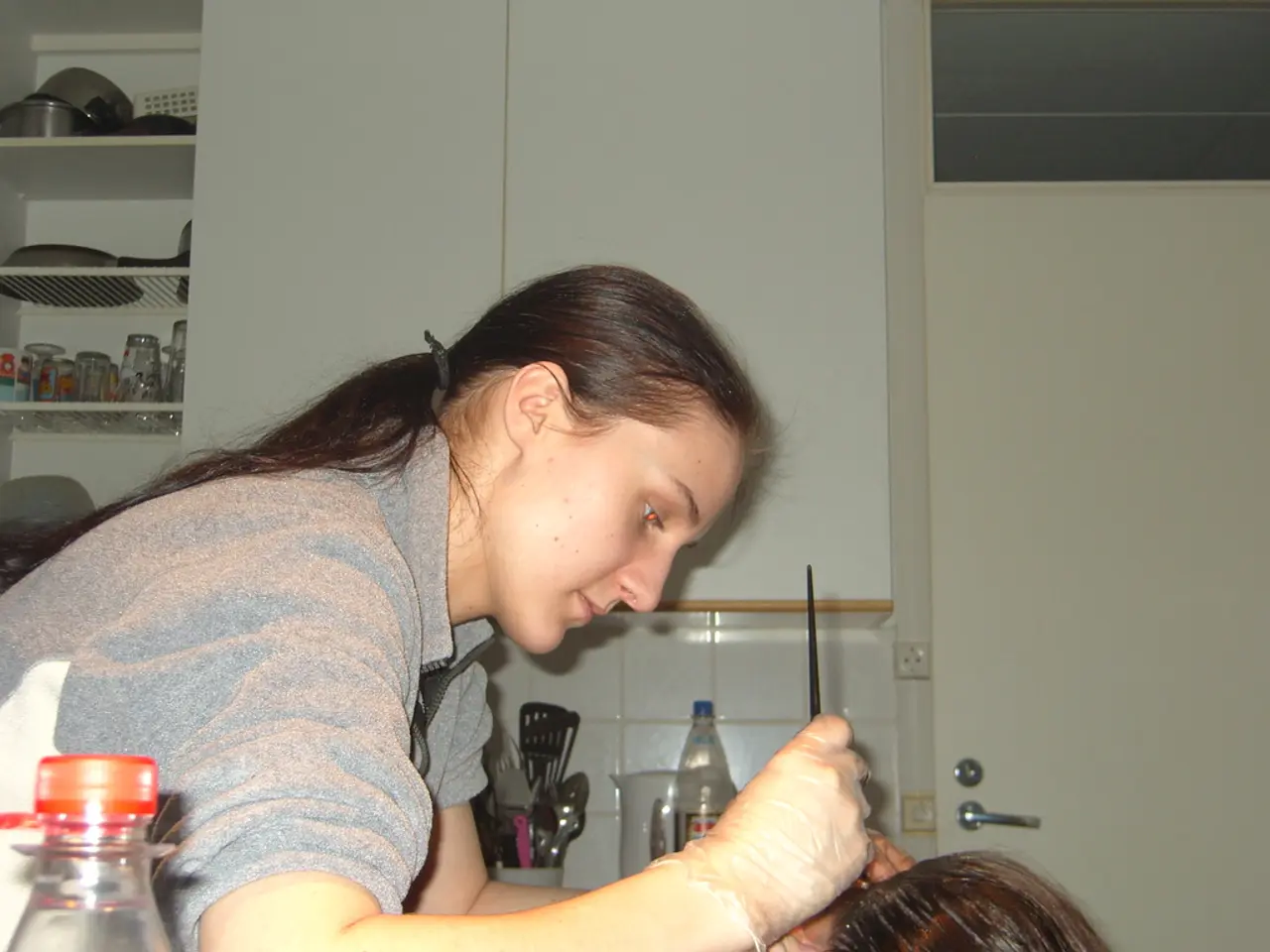Treating razor bumps on the genitalia: Methods and solutions
In the realm of personal grooming, razor bumps—also known as pseudofolliculitis—are a common annoyance for many individuals. These bumps result from the inflammation of hair follicles due to ingrown hairs, a condition that is different from both razor burn and folliculitis.
Razor burn, on the other hand, presents as a rash, an area of discoloration, or a burning sensation, while folliculitis is similar to razor bumps but caused by a different inflammation in the hair follicle.
Ingrown hairs often occur in areas of the body that are subject to hair removal techniques, including the pubic area. To effectively treat and prevent razor bumps in this sensitive region, follow these key steps:
- Use a sharp razor and hydrating, fragrance-free shaving cream or oil to minimize irritation.
- Shave in the direction of hair growth with short, gentle strokes.
- Exfoliate regularly before shaving to remove dead skin cells that can trap hairs.
- Moisturize the area after shaving with a fragrance-free moisturizer to soothe the skin.
- Avoid picking at any razor bumps or ingrown hairs to prevent infection.
For added precaution, wait until pubic hair has grown out to about 4mm before shaving, change blades frequently (after 5-10 shaves), and consider using a bikini trimmer instead of a razor to reduce ingrown hairs, especially if you have sensitive skin or curly/coarse hair.
Chemical exfoliants containing glycolic acid or salicylic acid can be helpful for preventing ingrown hairs by keeping pores clear and allowing hairs to grow out properly. If razor bumps or razor burn occur, applying soothing topical creams and practicing gentle skin care helps reduce discomfort and inflammation.
Alternative hair removal methods, like trimming with scissors or using body trimmers, may also reduce the risk of razor bumps compared to shaving with a blade.
In some severe cases, a short course of oral antibiotics, such as tetracycline, may help treat infection and provide some anti-inflammatory effects. Acne treatments, such as benzoyl peroxide or salicylic acid, may also help by reducing inflammation and removing dead skin cells to encourage the trapped hair to emerge from the skin.
In some instances, a short course of oral antibiotics, such as tetracycline, may help treat infection and provide some anti-inflammatory effects for severe razor bumps. Topical corticosteroids, such as hydrocortisone cream, can help reduce inflammation and irritation caused by razor bumps.
If the ingrown hair is near the surface of the skin and visible, it may be possible to remove the trapped hair gently using a sterile needle or tweezers to help reduce the bump.
However, it's important to note that certain sexually transmitted infections (STIs) may cause symptoms similar to razor bumps, such as genital herpes and genital warts. If you suspect an STI, it's crucial to consult a healthcare professional for proper diagnosis and treatment.
Lastly, electrolysis and laser hair removal offer long-term solutions to unwanted hair growth, but they may cause some pain or discomfort and a person will require multiple treatments. These methods can be worth considering for those seeking a more permanent solution to razor bumps.
Ankylosing spondylitis, a type of inflammatory arthritis, can sometimes cause the lower back to feel stiff and achy, similar to the discomfort experienced from razor bumps. HIV, a disease that attacks the immune system, can also present with skin-related issues, such as dermatitis and psoriasis.
In the realm of health-and-wellness and skin-care, atopic dermatitis, a chronic inflammatory skin disease, can be managed with predictive science and appropriate treatments, including corticosteroids and topical immunosuppressants. Asthma, a chronic lung disorder, may coexist with skin conditions, and effective treatments can help manage both conditions.
Science has made advancements in the treatment of NSCLC, a type of lung cancer, with targeted therapies like EGFR tyrosine kinase inhibitors and immunotherapy options like checkpoint inhibitors. Crohn's disease, an inflammatory bowel disease, can be managed with medications like corticosteroids, immunomodulators, and biologic therapies.
For individuals with haircare concerns beyond razor bumps, hair thickening products and sunglasses with UV protection can contribute to maintaining healthy hair and eyes. Migraine sufferers can find relief with various treatments, including medications, dietary changes, and stress-reducing techniques.
Removal of unwanted hairs can be achieved through methods like tweezing, waxing, and crossing over to the health-and-wellness tier of hair removal techniques, such as electrolysis and laser hair removal. However, it's essential to be aware that these methods might cause pain or discomfort and may require multiple treatments.
It's crucial to be mindful of skin-related symptoms, as they can sometimes indicate diseases like diabetes or migraines. In some instances, it may be wise to consult a healthcare professional for proper diagnosis and treatment.
Taking care of one's skin is an essential part of personal care and overall health. Regular cleansing, moisturizing, and protecting the skin through the use of sunscreens and other skin-care products can help maintain a healthy and youthful appearance.
By following proper steps for hair removal and practicing good skin care, individuals can help prevent and treat conditions like razor bumps and skin diseases, enabling them to lead healthy and well-groomed lives.




